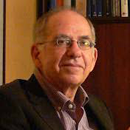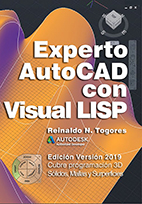
Reinaldo N. Togores Karl Marx said that "the sense of color is the most popular form of aesthetic sense in general." His preference for red is not surprising. Since the France of the Bastille and the guillotines, red is emblematic of Revolution. In popular parlance, a Marxist is a "red". Nothing then more appropriate than red as the protagonist in this project for a plaza and monument dedicated to Lazaro Peña1, leader of the first Cuban Communist Party and founder, in 1939, of the Workers Confederation of Cuba (CTC). But the sense of a color is not independent of the quality of the material to which it belongs. "Luxury" materials such as granite and marble have been used too many times to honor exploiters and tyrants. When choosing the material for this project we rejected them, preferring instead a "poor" material such as clay. Baked clay has, though "poor", a peculiar nobility. It has accompanied man from the same origin as an industrious and thinking being. Not without reason it was the material chosen by the creator, according to the biblical account, for his masterpiece: man itself.  The action of a labor activist as Lázaro Peña finds its roots in a "German ideology" such as that of Marx and Engels. The Architecture of the old red brick municipalities in northern Germany correlates to this philosophy's austerity; an Architecture that according to Weigert2: "creates a distinctive symbol for the city, profane not sacral like the church. It is austere, poor and harsh, reflecting a lifestyle that does not care ... for existence's embellishments, for its pleasant accessory aspect, but that cares only for its function, of service to the whole and of the individual (subordinate to) this totality, in which the part nothing represents".  Surely the choice of brick made back in the Twenties by the German Mies van der Rohe for his monument to Karl Liebknecht and Rosa Luxembourg inserts itself within this tradition.  Based on the multiple links with streets, buildings and neighboring parks, including one for children games located on the same block and taking into account the topography and the existing trees, we established a continuity of paths that converge in a center that becomes a plaza, a podium and a monument.  | We use the cladding of red tiles both for the pavement and for the vertical surfaces that make up the monument's central structure. This strengthens its democratic character, in the sense that it comes "from below", and below as well, near the base from which a good labor leader never distances himself the relief depicting Lázaro Peña shall be inserted.   The paraments in addition to growing in height, are staggered in depth, this way referring to the main directions in which our perception of space is structured, vertical and horizontal, we can say that in addition to "coming from below" it comes "from the rear". In other words, it advances in the manner of the successive human waves that once, in street demonstrations, expressed their demands.   The walls, staggered, are deployed in the manner of the red flags wielded by those crowds. The image of the star, symbol of Cuban liberation struggles, also reappears as the culmination of this ensemble, suggested by metallic planes that intersect and recompose themselves revealing, step by step, their identity.  The monument also marks the boundary between the two destinations for this area: the commemorative ceremonial and the children's playground3. These uses, contradictory at a first glance, are not so if one considers the Guevarist philosophy of the "new man" as a goal, but also as a necessary condition for an ideal society.  This way we arrive to the conception of a center that is both beginning, point of arrival and gateway to new territories. Territories which are precisely the domain of the now arising generations. The "new pines" in which José Martí deposited his trust. |


